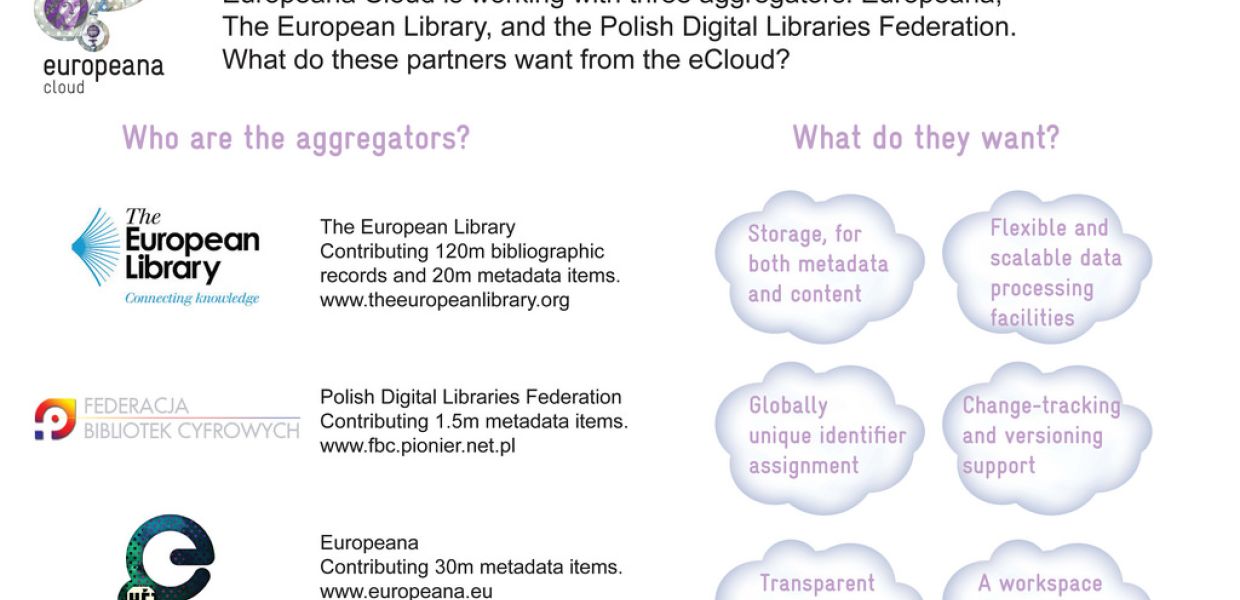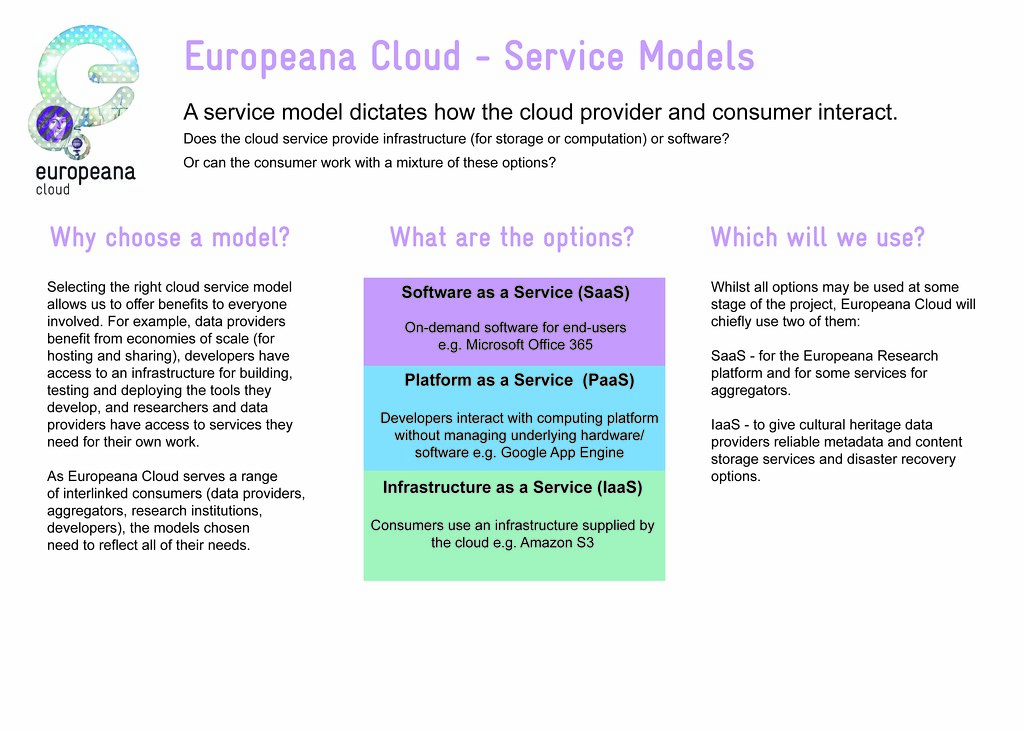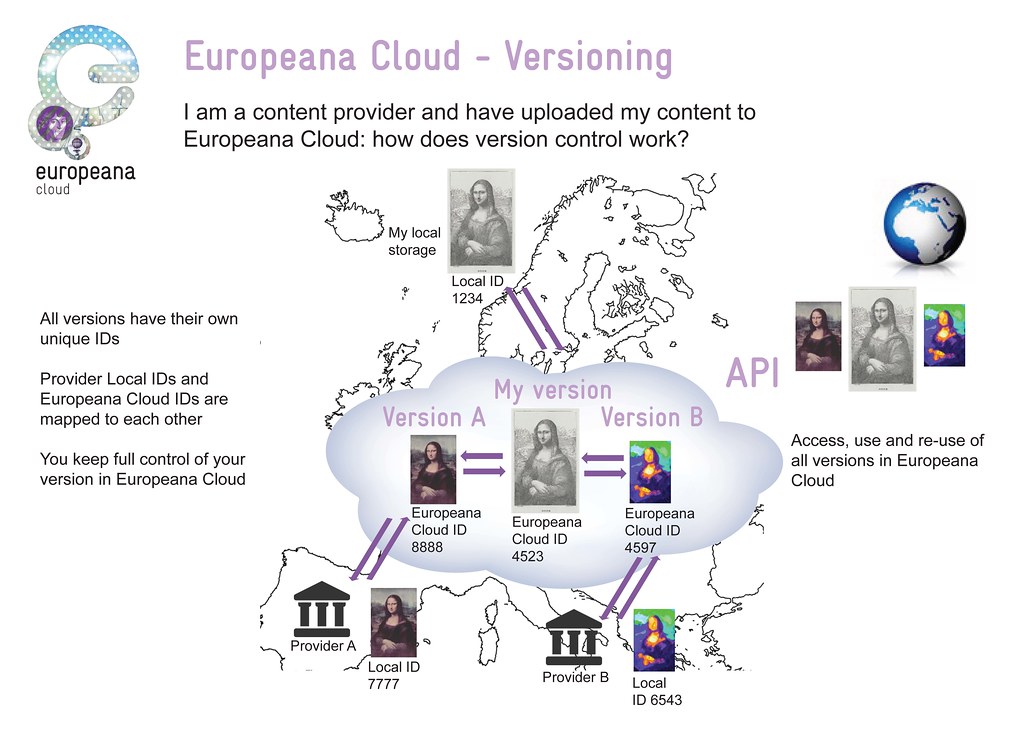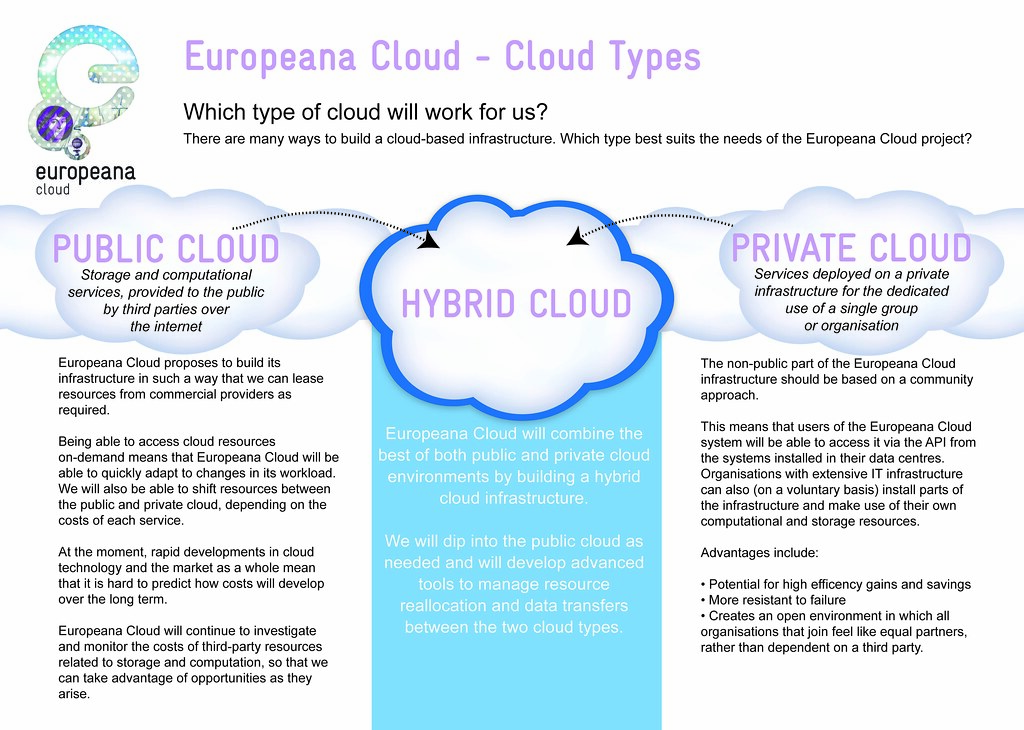Visualising The Architecture Behind Europeana Cloud

What will Europeana Cloud’s new infrastructure look like? How will Europeana and its aggregators benefit? What about version control?
Answers to these questions are laid out in our report: Europeana Cloud Architectural Design and the key points are also now available through four graphics. They look at the cloud from four perspectives.
1. Aggregators - What do the three main aggregators involved in Europeana Cloud want from the project? Some of the potential benefits include a new place for data storage, flexible data processing capabilities and the ability to track changes and versions of digital content.

2. Service Models - A service model outlines how the cloud provider and the users will interact. Europeana Cloud will mainly use two models: Software as a Service (SaaS) and Infrastructure as a Service (IaaS). This graphic explains why.

3. Version Control - All versions of content uploaded to Europeana Cloud will have their own unique ID numbers which are linked to one another. Content providers will always keep full control of their own versions in the cloud.

4. Cloud Types - Europeana Cloud will be built as a Hybrid infrastructure, combining the best features of both Public and Private clouds. On the private side, data providers will be able to access the cloud via an API from systems installed in their data centres. We will dip into the public cloud as needed, for example if it makes financial sense to do so, and will develop advanced tools to manage resource allocation and data transfers between the two cloud types.

